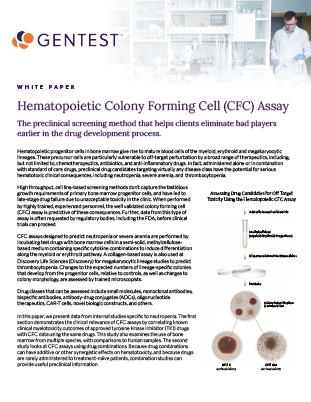
Hematopoietic progenitor cells in bone marrow give rise to mature blood cells of the myeloid, erythroid and megakaryocytic lineages. These precursor cells are particularly vulnerable to off-target perturbation by a broad range of therapeutics, including, but not limited to, chemotherapeutics, antibiotics, and anti-inflammatory drugs. In fact, administered alone or in combination with standard of care drugs, preclinical drug candidates targeting virtually any disease class have the potential for serious hematotoxic clinical consequences, including neutropenia, severe anemia, and thrombocytopenia.

